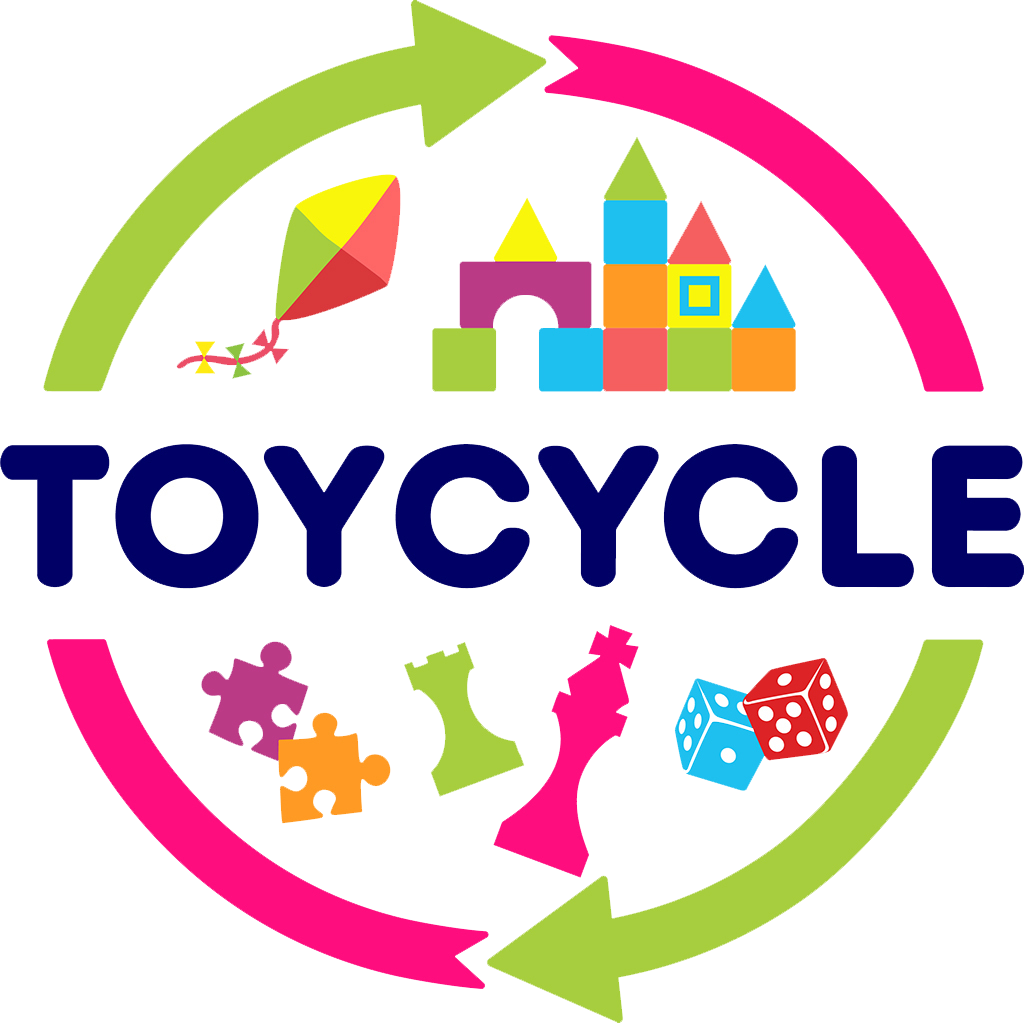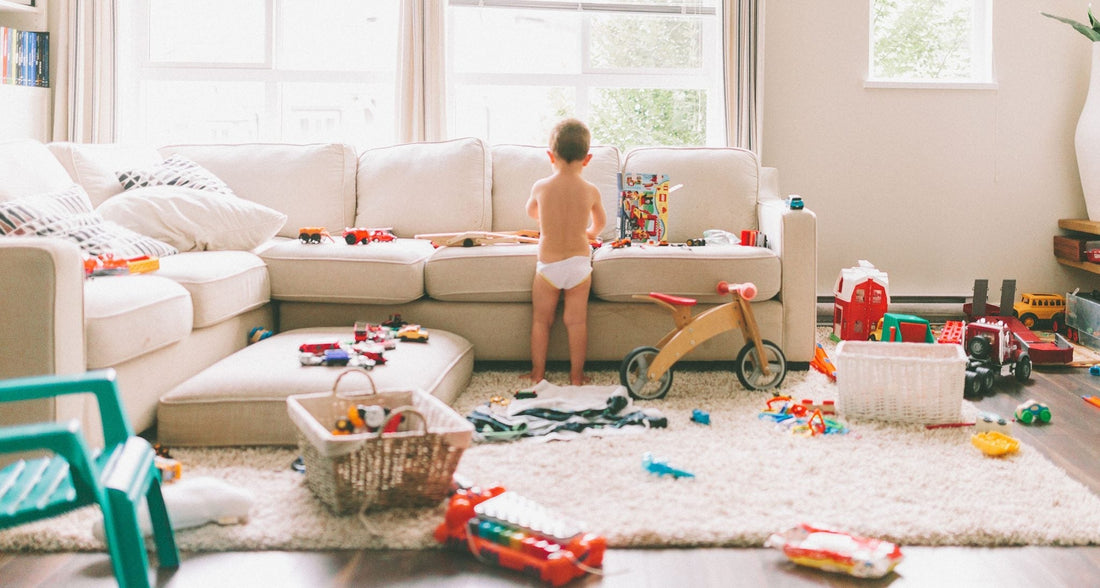The toy industry is a $20 billion dollar giant, and plastic toys make up 90% of this massive market. Even clutter-savvy parents can find themselves grappling with a constant influx of toys; toys gifted at holidays and birthdays or handed down by well-meaning relatives and friends. When the toy box gets a little too full, it's time to part ways.
But how can parents move items along with the least amount of impact to landfills and waterways? After all, the tiny tots ruling the playroom today will rule tomorrow's planet. It's in everyone's best interest to clear the clutter in a sustainable way.
Plastic pollution is a global problem; 79% of all plastics ever manufactured are stacking up in landfills and floating in our oceans. Toys are no small part of this great stew of waste. Landfill-bound plastics can take upwards of 400 years to break down, and may never fully disappear. Landfills should always be treated as a last resort. Putting toys into the reuse stream instead of the waste stream is a far more sustainable practice.
Game plan? Divide and conquer.
Take stock of what you've got. Pre-owned items fall into three different categories--like new, used, and used up.
True gold: Toys with a whole lotta life left.
In this pile, items are clean with little to no visible wear. Battery-operated toys function as they would straight out of the box. No pieces are missing, games and building sets may even include original packaging and directions. Characters are relevant to current popular culture. These toys have value and generally sell well when priced competitively.
Looking for an easy way to find a buyer for like new toys? Consider Toycycle's ultra-convenient, white-glove consignment service. Have the work done for you while earning great value for your items. Or go the DIY route with Craigslist, Ebay, OfferUp, Nextdoor or other online marketplaces. Like-new toys can sometimes be donated to charities looking for unwrapped, new gifts during the holidays.
Embracing the imperfect: Toys with a little wear and tear.
These toys might have a few nicks, dings, or other slight imperfections. A few non-pertinent pieces may be missing; other items not included with the original toy can sometimes be substituted to complete a set. Battery-operated functions still work, cloth items may show signs of washing but are still clean and stain-free.

Consider selling these items at a significantly reduced price, or set these items aside for donation. Toycycle sometimes accepts items in less than perfect condition and prices them accordingly. Thrift stores, garage sales, hospitals, and shelters are also great options for donation of items that won't net much financially, but still have lots of use left. Check within your local community to find out where items might be needed.
This one's seen better days: Toys ready for the trash heap.
These toys are no longer play-worthy, either because they are broken, non-functional or unsafe. Recalled items should always be clearly marked as such before tossing. Never donate broken items or toy sets missing essential pieces; it creates more labor and expense for the accepting organization.
Trashing toys: How to do it right.
Before placing items out for trash collection, take a look at what you're tossing. Because toys are often made of several different plastics or other materials, it's often not possible to recycle them whole. Check for compostable or recyclable components, and break toys apart as needed if you're able. Battery-operated toys should be treated as electronic waste and disposed of as such. Your community may offer e-waste collection. Lowe's and Home Depot both collect batteries for recycling across the United States.
TerraCycle provides recycling for virtually everything, including broken toys. Collection boxes are often expensive, however, toy manufacturer Hasbro has partnered with TerraCycle to provide free recycling for many of its games and toys.
Out of other options? It's time for the trash can. Remember that less plastic is destined for the trash when consumers refuse to buy new, cheap toys that are designed to break. Smart purchasing decisions are far more important than smart recycling decisions.
Extra tips for extra play.
Get to know your thrift store
Not all thrift stores resell children's toys, even if they are accepted at dropoff. Ask your store manager what happens to donations that are unwanted or unsaleable. Some organizations make sure that items go through a step-by-step process before they are considered landfill waste; others toss items on site. Make sure your thrift store isn't a trash can in disguise.
Skip the thrift store altogether
Shelters for battered women or homeless families often have use for quality toys. These toys need not be in perfect condition, but a good rule of thumb is to donate only what you'd want your own child to receive. When in doubt, ask the shelter manager. Daycares, medical waiting rooms, and libraries in your city or town may also welcome gently-used donations.
Consider online consignment
For excellent-condition items, online consignment can be a lifesaver for busy moms; simply arrange a pickup or mailing bag, and let the tedious work of listing be done by someone else. Payment is issued after the sale closes. Again, it's important to know what happens to unsold items. Toycycle takes sustainability one step further by listing unsaleable items for free on a peer-to-peer sharing network in the San Francisco Bay Area-putting great toys straight into the hands of kids who can use them.

Embrace out-of-the-box ideas
Get a bunch of moms and kids together for a toy swap at a local park, or, if you have the space, start a toy-lending library in your community. Sustainable solutions start small but have a big impact over time!
It won't be long before you're enjoying a clutter-free kid zone. And next time you need to purchase toys, remember to shop secondhand first-there are a lot of great toys out there in the reuse world waiting for you!

